We left Granada in the fog. It was a hair-raising bus ride through the mountains, but our trusty driver, Pepe, brought us through safely to great applause. After crossing the mountains we stopped first at Antequera, the location of neolithic archeological remains, since 2016 on the UNESCO World Heritage List, then proceeded to Ronda, a striking city built across a dramatic ravine. After lunch, we had an uneventful ride to our hotel on the Costa del Sol, where we would spend two final nights in Spain before crossing into Morocco.
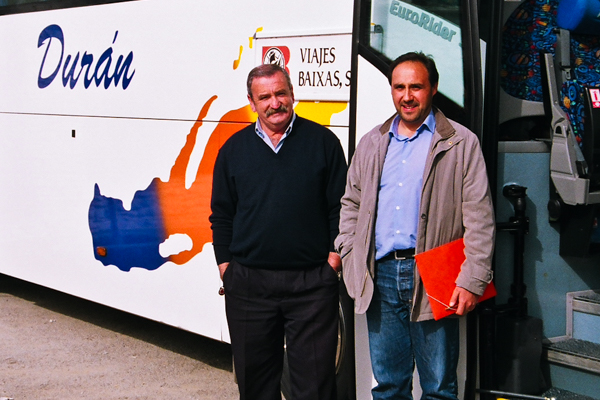
Since Pepe accomplished a heroic feat by bringing us through the foggy mountains (seriously, we've made a lot of hairy bus trips, but this was truly special), it seems appropriate to include a picture of him (on the left) and our wonderful guide Gerardo, who was an encyclopedia of information about Spain's history, culture and geography.
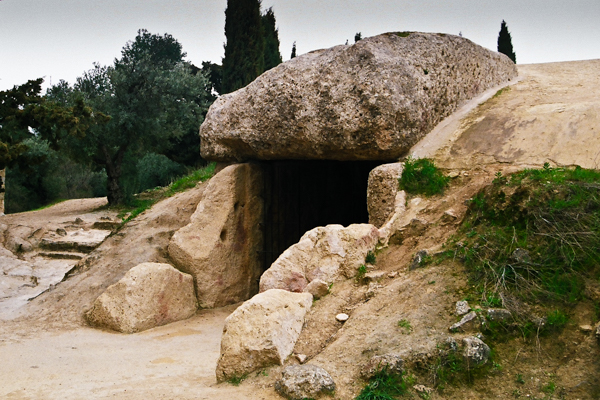 The
UNESCO World Heritage Site includes
three dolmen, ancient burial sites of huge stones, near
the town of
Antequera. This one, the
Dolmen de Menga, was built prior
to 2000 BC and is one of the largest in Europe.
The
UNESCO World Heritage Site includes
three dolmen, ancient burial sites of huge stones, near
the town of
Antequera. This one, the
Dolmen de Menga, was built prior
to 2000 BC and is one of the largest in Europe.
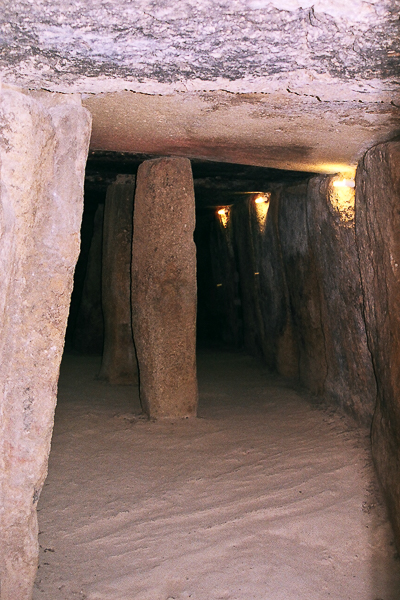 The
interior of the Dolmen de Menga. It is large enough for me to stand
upright.
The
interior of the Dolmen de Menga. It is large enough for me to stand
upright.
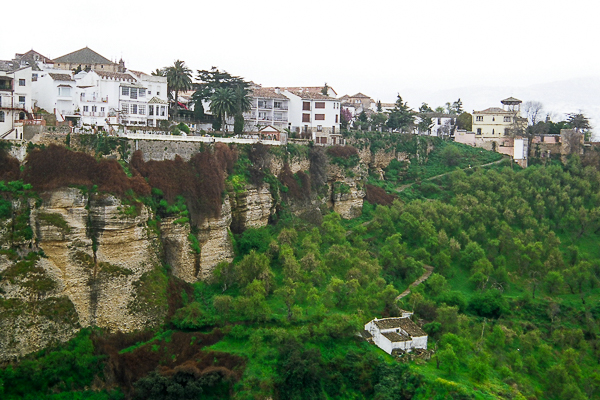
Our visit to the ancient town of Ronda was altogether too brief. The modern city is built on the two sides of a deep gorge. Most of our travels are teasers that make us want to learn more and come back. Several times since this trip, we have attempted to include a return visit, but the city isn't well served by mass transit and we have not been willing to rent a car and drive.
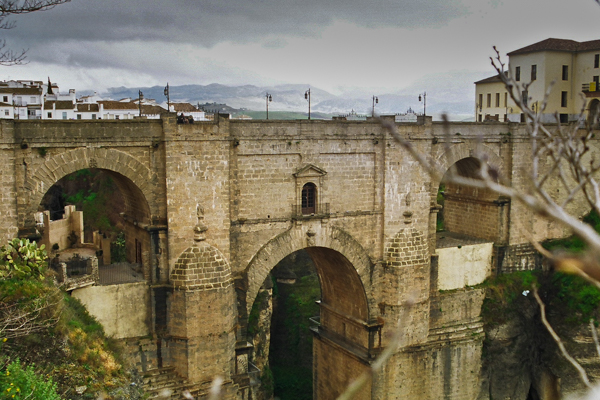 The
"New" Bridge, built in the 18th century, spans the ravine separating the two parts of the city.
It replaced an older one that collapsed.
The
"New" Bridge, built in the 18th century, spans the ravine separating the two parts of the city.
It replaced an older one that collapsed.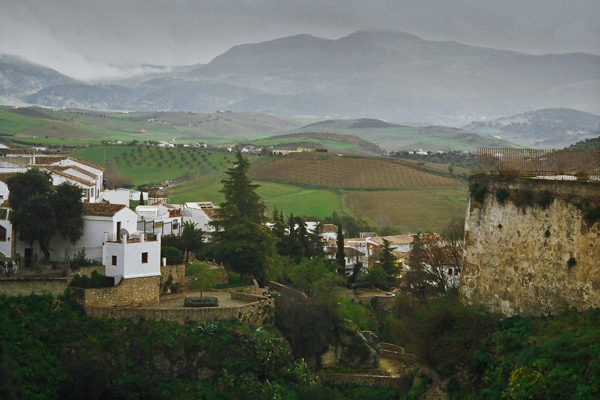
The surrounding countryside as seen from the New Bridge.
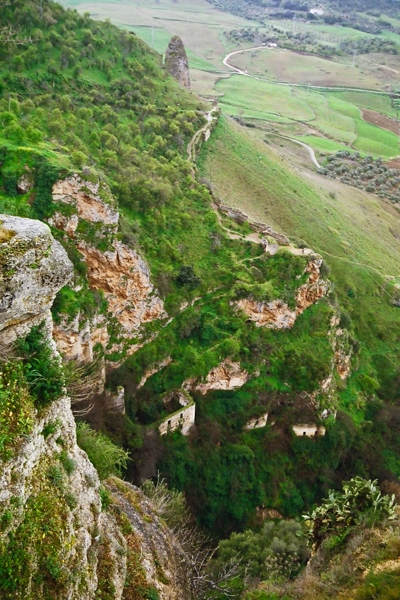 The
pictures from the high ground can't give quite the dramatic perspective,
but at least this one indicates the depth of the gorge that this city
spans.
The
pictures from the high ground can't give quite the dramatic perspective,
but at least this one indicates the depth of the gorge that this city
spans.
One of our group climbed down into the ravine and I'm sure got much more dramatic pictures, but I was more interested in lunch (at least for this trip).
Besides it was raining.
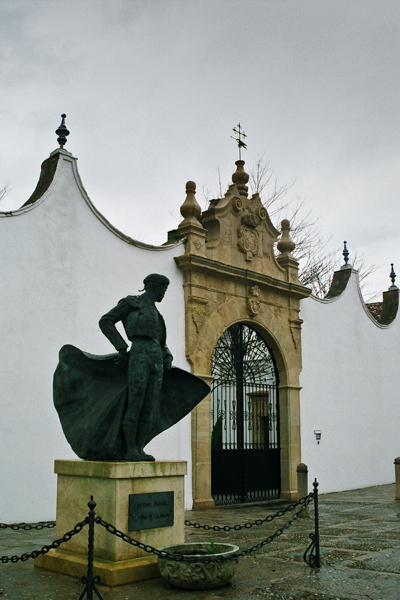 Ronda
was one of the birthplaces of bullfighting. This
bullring
was constructed in the 18th century at the time
that bull fighters began to face the bull on foot rather than on horseback.
Two major bullfighting families originated in Ronda:
the
Romero and the
Ordóñez families.
Ronda
was one of the birthplaces of bullfighting. This
bullring
was constructed in the 18th century at the time
that bull fighters began to face the bull on foot rather than on horseback.
Two major bullfighting families originated in Ronda:
the
Romero and the
Ordóñez families.
The 18th century founder of the Romero family is credited with introducing the iconic red cape.
The sculpture is of Cayetano Ordóñez, who was used as the model of the bullfighter in Hemingway's The Sun Also Rises.
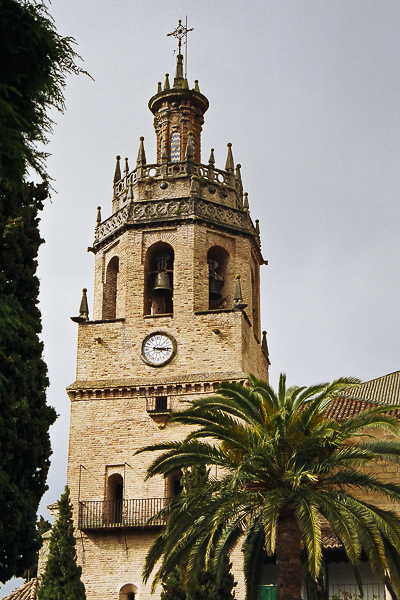 We
were told that the
Church of Santa Maria la Mayor had originally been built as a
mosque and converted to a cathedral. The tower was said to be the
original minaret.
We
were told that the
Church of Santa Maria la Mayor had originally been built as a
mosque and converted to a cathedral. The tower was said to be the
original minaret.
Not quite.
There had been a mosque on the site and it was converted to a cathedral, but that building was destroyed in a 16th century earthquake. This is a replacement. It is no longer a cathedral.
Prior to the mosque, there was a Visigoth church, and prior to that, there was a Roman temple. This is a very old town.
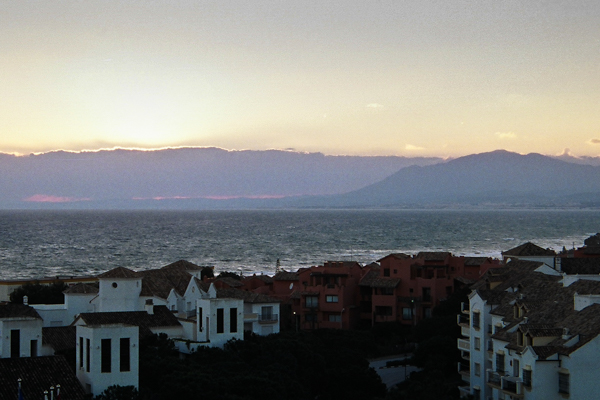 That
night we settled into our hotel on the
Costa del Sol, where we stayed for a couple of nights. I don't
recall which town it was in. This was the view west from our
hotel room.
That
night we settled into our hotel on the
Costa del Sol, where we stayed for a couple of nights. I don't
recall which town it was in. This was the view west from our
hotel room.The hotel had a private beach reached through an extensive garden. Since it was winter, and windy to boot, there were no bathing beauties to be seen and no temptation to take a dip in the Mediterranean. Not that I am a fan of beaches at the best of times.
Click your "back" button to return to the previous page or click for our picture album